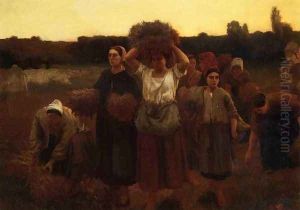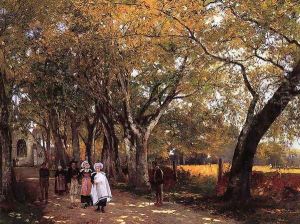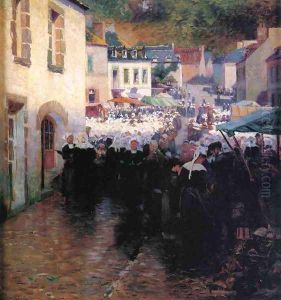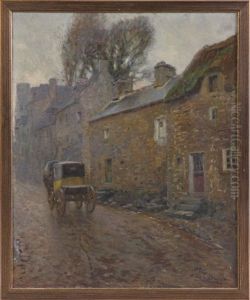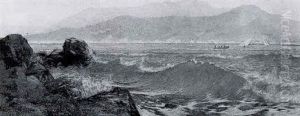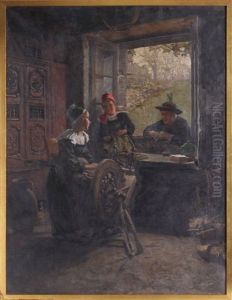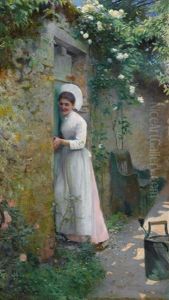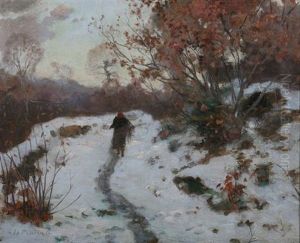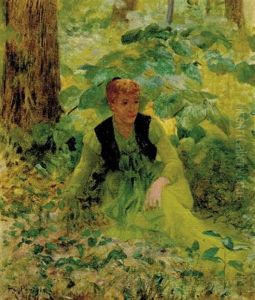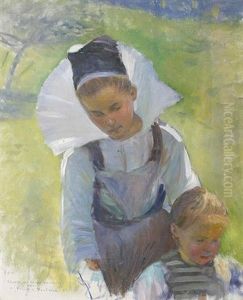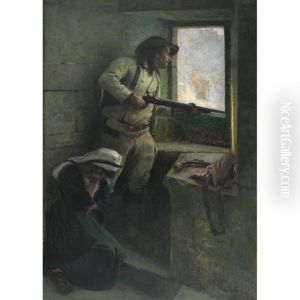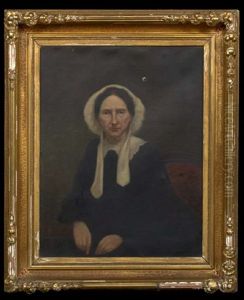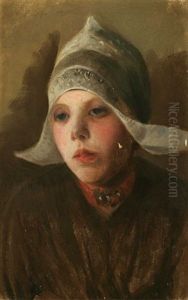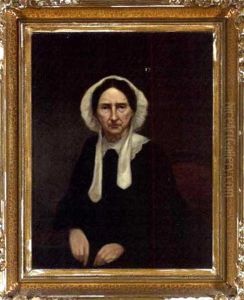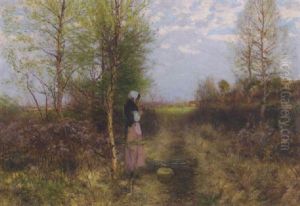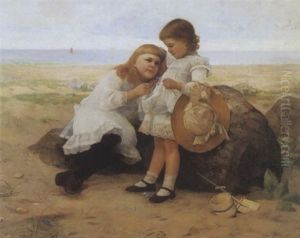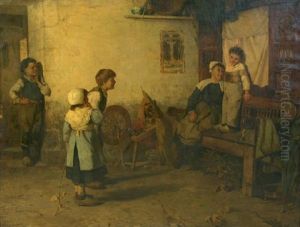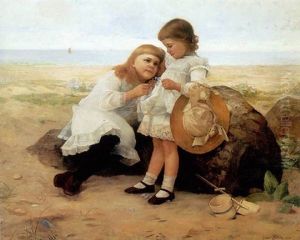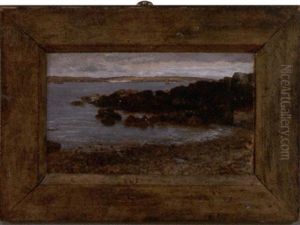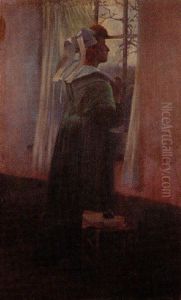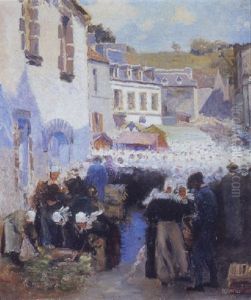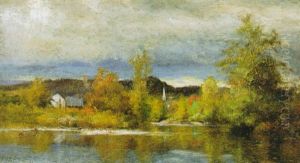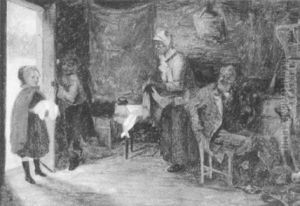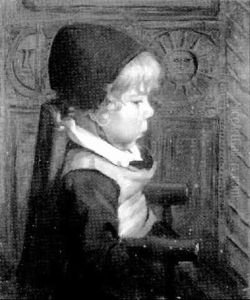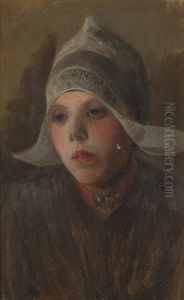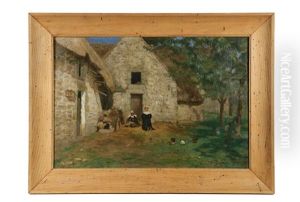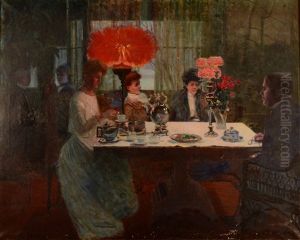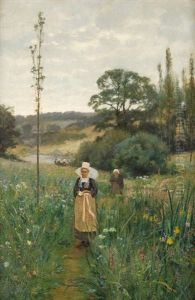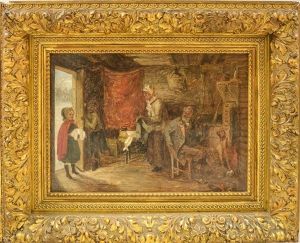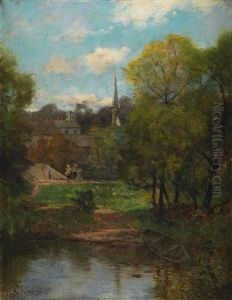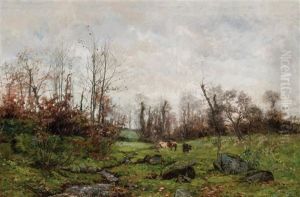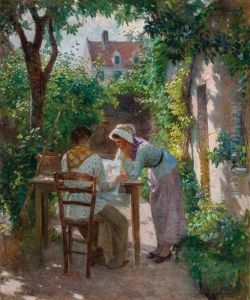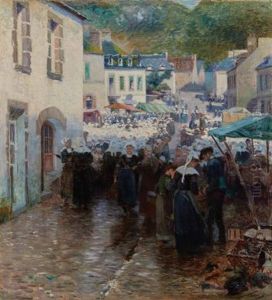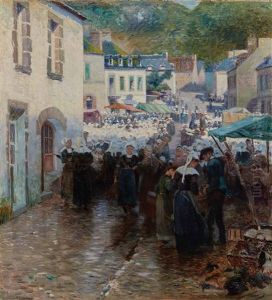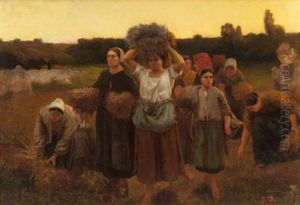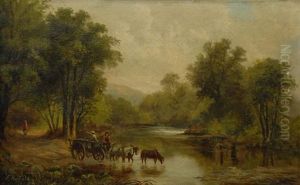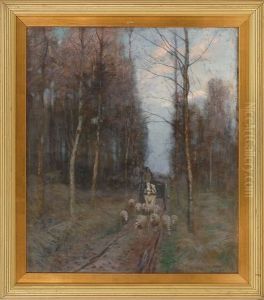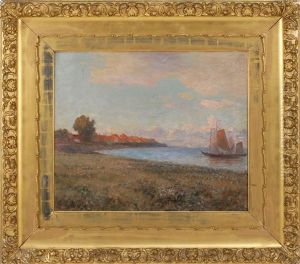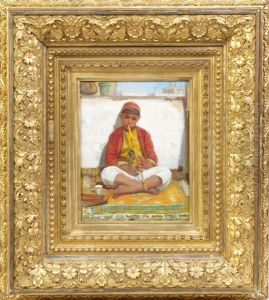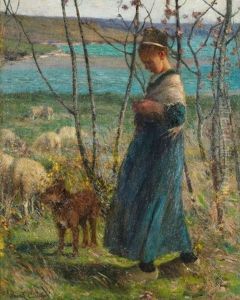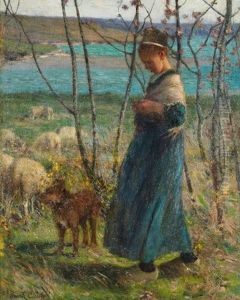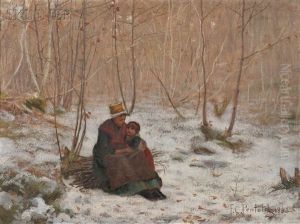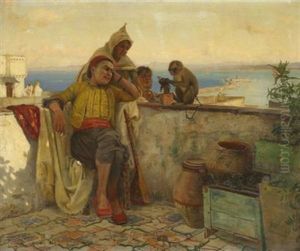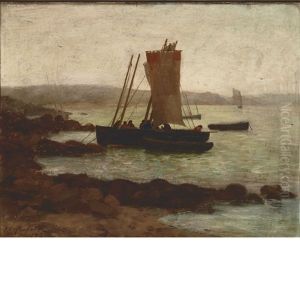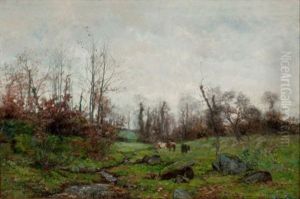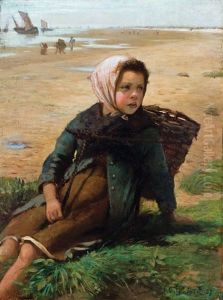Frank C. Penfold Paintings
Frank Crawford Penfold, born in 1849 in Buffalo, New York, emerged as a significant figure in the realm of American and French art scenes of the late 19th and early 20th centuries. His journey into the world of art began under the tutelage of his father, who was a portrait painter. This early exposure to art sparked Penfold's lifelong passion and commitment to his craft. Seeking to further his education and refine his skills, Penfold traveled to Paris in the early 1870s, where he studied at the prestigious Académie Julian. There, he was influenced by the teachings of William-Adolphe Bouguereau and Tony Robert-Fleury, both of whom played pivotal roles in shaping the artistic directions of many American artists in Paris during that era.
Penfold's style was deeply rooted in the academic tradition, yet he exhibited a remarkable ability to adapt and evolve his techniques in response to the changing art movements of his time. Throughout his career, he seamlessly navigated through genres, including portraiture, landscape, and genre painting, showcasing his versatility and keen observational skills. His works often depicted scenes from rural French life, capturing the essence of the countryside with a sensitivity and realism that resonated with both critics and the public.
During his time in France, Penfold became an integral part of the expatriate artist community, forming close associations with other American artists living abroad. Despite his success in Europe, he maintained strong ties to his hometown of Buffalo, returning there frequently and contributing to the local art scene through exhibitions and teaching. In 1889, he played a pivotal role in establishing the Buffalo Art Students League, an institution that aimed to provide high-quality art education and foster a vibrant artistic community in the region.
Penfold's work received considerable acclaim during his lifetime, with exhibitions at prestigious venues such as the Paris Salon, where he was awarded an honorable mention in 1884, and the Pan-American Exposition in Buffalo in 1901. His paintings are characterized by their refined technique, attention to detail, and the emotive quality of light and color, attributes that have continued to captivate audiences and collectors to this day.
Frank C. Penfold's legacy extends beyond his paintings; he is remembered as a dedicated educator and a key figure in the development of the art scene in both France and the United States. His commitment to art education and his influence on the generations of artists who followed have secured his place in the annals of art history. Penfold passed away in 1921, leaving behind a body of work that continues to be studied and admired for its contribution to the transatlantic exchange of artistic ideas and techniques during a pivotal period in art history.
